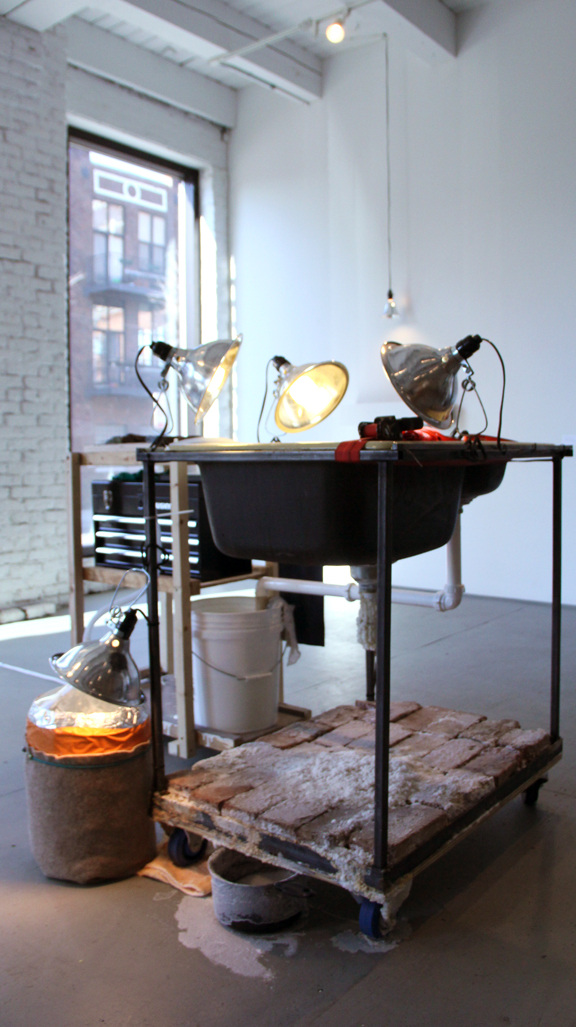


Life, in some form
2012
Marissa Lee Benedict (two-person exhibition curated by Christina Cosio with ︎︎︎Britt Ransom at the Chicago Artists Coalition, Chicago, US)
___
In the process of demonstrating how the galaxies, the solar system, the Earth, cellular life could not help but be born: Part I (light), Part II (carbon), Part III (atmosphere)
Part I: Dunaliella salina, salt, water, solar still, cyanotypes, cast iron sink, steel, brick, wood, blackboard compound, hot plate, pot, clamp lights, casters /
Part II: Mead (honey, water, yeast), Langstroth hive, carbon foam (sugar, sulfuric acid), bee hive smoker, Beebalm, plywood, ratchet strap, latex tubing, bricks, felt, clamp lights, casters
Part III: Chlorella (algae), Blue Oyster mycelium, cold packs, bottles, bottling tools, crate, felt, ratchet straps, clamp lights, casters.
_
the universe is a series of feedbacks, positive and negative
mead (honey, water, yeast), Chlorella (algae), honey-plastic, plastic containers, bricks, plywood, steel, mini-fridge, clipboard, casters
-
Excerpt from the Life, in some form catalog essay by Christina Cosio:
Both artists [Benedict and Britt Ransom] engage processes of transformation to metaphorically gesture outward, beyond their installations and the gallery itself. In other words, we may consider this exhibition as a treatise on systems. To wit, Benedict’s work is an ongoing investigation into the relationship between humans and the natural world, examining potential energy and generative processes. At this juncture in her practice, she now explores the ancient fermentation process of converting honey into the alcoholic beverage, mead. In the universe is a series of feedbacks, positive and negative, tubes, vats, and jugs feed into one another; in fact, the combination of yeast and sugar provides carbonic gas that nourishes the algae. In a previous installation, she extracted biodiesel from the same tub of algae as an investigation into concepts of yield and “use” of technology in nature. Pushing this work even further into systems of economy and exchange, she invites visitors to pre-purchase a custom-made bottle, empty it, return it, and allow her to store and display it until the mead is ready for filtration and distribution. This work represents one slice of her research continuum on natural processes and human interaction.